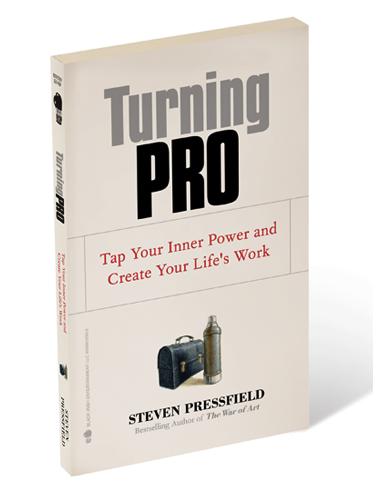Turning Pro is the new book by Steven Pressfield, author of War of Art and Do The Work. In fact, I would argue that together, read in order, the three make a cohesive whole. Turning Pro is an essential followup to those previous works and answers any question of “Now what?” the first two books may have left.
That “now what?” is this: The time for amateur hour is over. You have made excuses for too long. It is now time to change. Time to pull the pin and release yourself from the train of other people’s expectations and desires. Time to ride the rails that only you can put down in front of you. Time to go pro.
I counted those earlier works among my favorites and essential to artists and creatives who wanted to break past the fear, self-doubt, and blocks we face daily to get to the hard work of doing.
For a writer like myself, that means having a routine and carving out space and time that is sacred for the task. Write every day. Because the muse only shows up for those that are at the same time and place, every day. That, anything else is not the work. Anything else is a hobby.
Even though I subscribed to many of the principles set forth already, even though I am a published author, even though I took much of what was laid out in his first two books to practice, this book was a wake up call for me.
If you are an artist or creator of any stripe, you need this book. If you are one who is stuck in a shadow career working on someone else’s job, you need this book. And, if you are a professional who thinks you have it all figured out, you really need this book.
Even more so, you need to give this book to anyone you know who you feel is in any of those places. I was only a quarter of the way in before I came up with a short list of people who I knew would benefit from it greatly (and sent it to them as a gift). Then, even after I had already purchased it and started to dig in, I received several emails from other trusted friends of mine telling me they were only part way through but could not wait to tell me to go and get it. Therefore, do yourself a favor and get the paperback. This is one to highlight, mark up the margins, and pass around.
